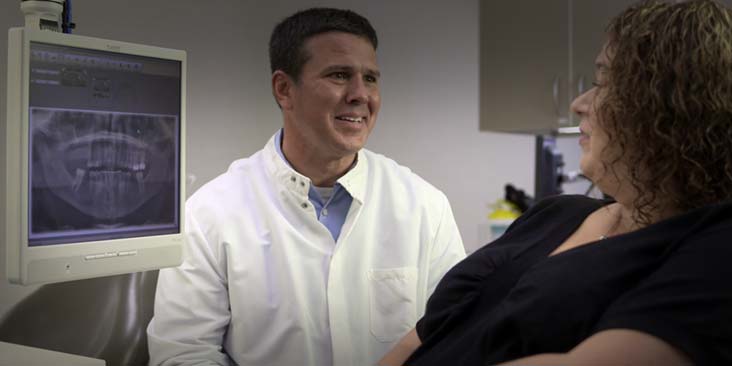
Flossing Teeth
Why Should I Floss My Teeth?
Flossing is vital activity for keeping teeth clean, and can significantly reduce the chances of cavities and tooth decay as well as gum disease. Remember to help your child learn proper flossing techniques from an early age.
How to properly floss your teeth:
- Break off about 18 inches of floss and wind most of it around one of your middle fingers. Wind the remaining floss around the same finger of the opposite hand
- Hold the floss tightly between your thumbs and forefingers
- Guide the floss between your teeth using a gentle rubbing motion
- When the floss reaches the gum line, curve it into a “C” shape against one tooth and gently slide it into the space between the gum and the tooth
- Repeat this procedure for each tooth using a fresh part of the floss, and don’t forget to floss behind your last tooth
If you have trouble flossing or are uncomfortable flossing, your dental hygienist can show you the proper technique, suggest aids and offer tips on how to get the most out of your flossing.
Also, learn about brushing teeth.
How Often Should You Floss Your Teeth?
The American Dental Association (ADA) recommends flossing at least once a day to remove plaque from the areas between your teeth where the toothbrush can't reach. The main benefits of flossing are that it prevents cavities, tartar build up, gum disease, and bad breath. Don’t wait until you feel like there’s food stuck between your teeth to floss. There’s plaque buildup on your teeth on a daily basis that needs to be removed.
Flossing your teeth should not be painful. You may experience discomfort and a small amount of bleeding when you first start your flossing regimen, but with daily flossing and brushing the discomfort should subside within a couple of weeks. If pain persists, consult your dentist.
Our Services
Dental Associates offers complete family dentistry plus specialty services like orthodontics, oral surgery, and dental implants. Click to learn more.
Dental Associates Locations
We have over a dozen convenient locations in Wisconsin. From Kenosha and Racine, up through Milwaukee, Fond du Lac, and Appleton to Green Bay.

